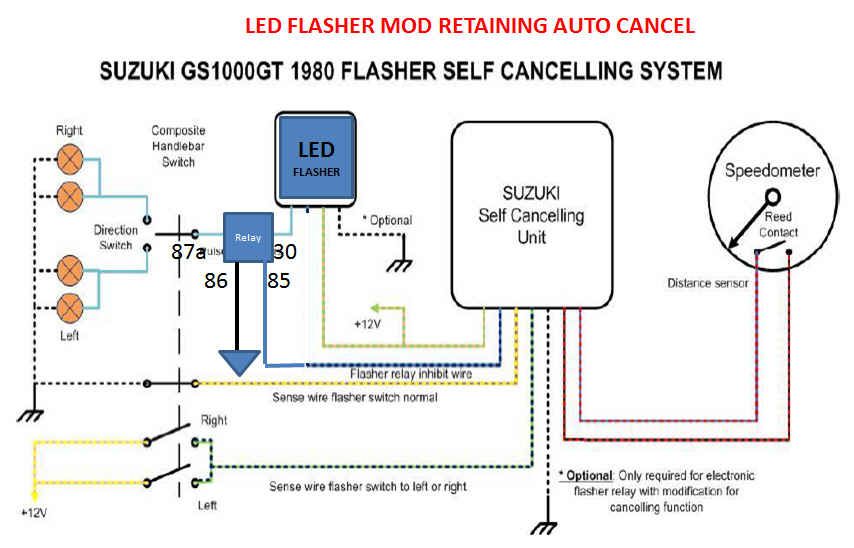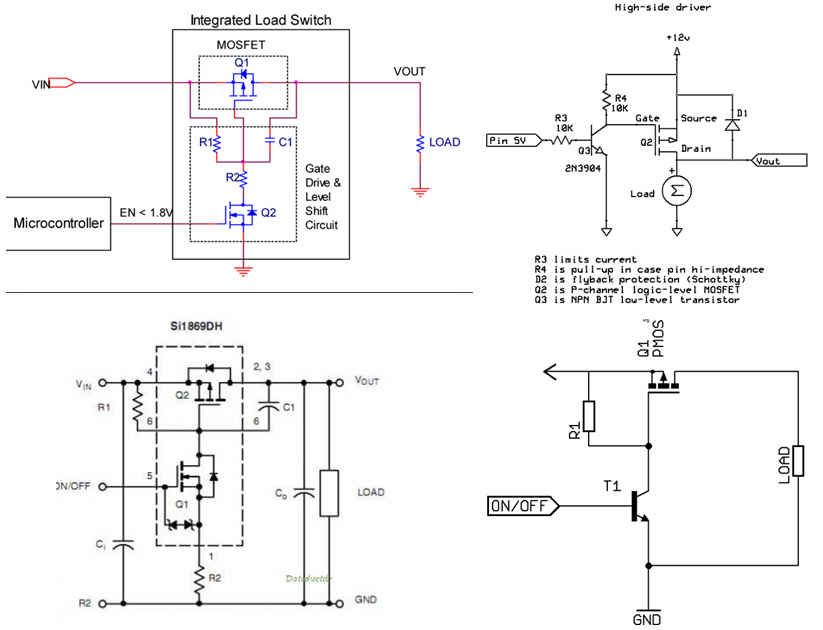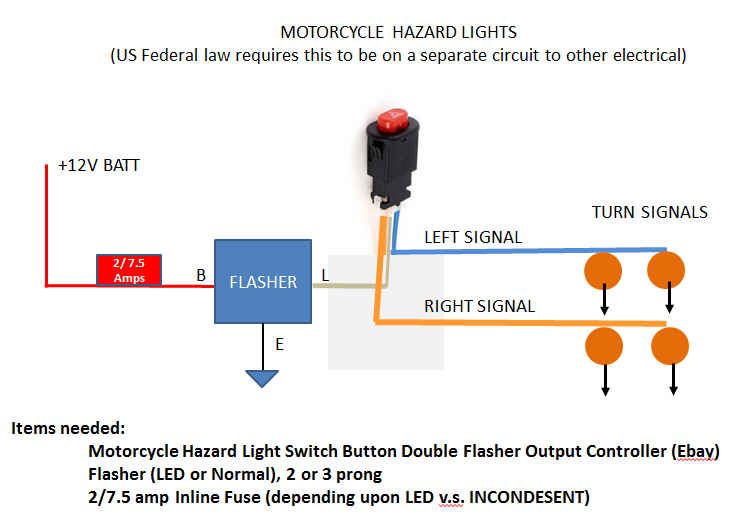OK if if the LED flashed will not go open when the ground is lifted then this should work. There are other ways of doing this using FET's but conceptually the same. The current draw on the relay coil is not real significant and once you center your switch the draw will drop to zero anyway.
I just modified Andre's original diagram from his TSCU repair pdf.

Looking at 4 different commercial High side switch implementations, each controls a series FET by controlling the Source to gate voltage. This is accomplished by tying a resistor to both the source and gate of the FET and then controlling the current through that resistor. Often providing a switch to ground from the gate does this. This general type of circuit must exist in any LED flasher that uses a high side FET; the control is coming from the timer circuit that causes the flash.
Since it is the current through the Source to gate resistor that turns the series switch on, blocking that current by lifting the ground will effectively turn off the switch as well. +12V applied to ground should therefore work as the Cancel function in the original OEM relay.
I'm going to buy something that probably a FET high side switch and hope for the best. The fall back is the external relay as described above.

.png)






 and brought it by for help. I proposed that we simply install one red and one blue lenses onto his front signals but he was not amused.
and brought it by for help. I proposed that we simply install one red and one blue lenses onto his front signals but he was not amused.
.png)
Comment